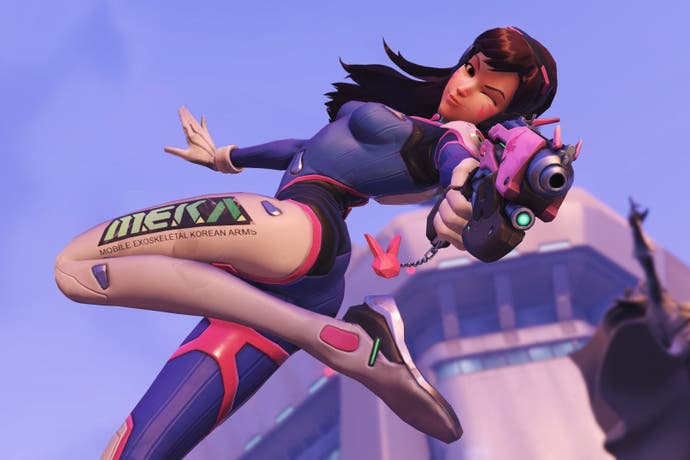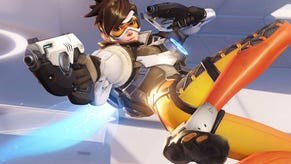How does Overwatch run on budget PCs?
Digital Foundry targets 60fps on sub-£100 graphics cards.
Just how does Overwatch fare running on lower-end PCs? The good news is Blizzard has extremely good form in PC optimisation to date - and whether it's World of Warcraft or Starcraft 2, it's always offered graphics settings to cater to a wide spectrum of setups. It's an important topic for those without a top-of-the-line machine, who still look for solid 60fps performance in Blizzard's new shooter. Thankfully, to ensure as many people can play as possible, Overwatch adapts very capably to a range of cheaper graphics cards and CPUs.
Take our budget PC as an example. Our test below uses a Core i3 4130 processor, 16GB of RAM and an overclocked GTX 750 Ti (a graphics card that currently costs under £90). It's by no means an exhaustively powerful machine, and yet on medium settings it plays at between 60-90fps, making for an experience that could potentially be locked at a smooth 60fps. We're targeting 1080p resolution in this case, with all settings manually forced to medium, scaling set to 100%, and only texture filtering pushed out to the epic preset.
The GTX 750 Ti holds up convincingly, though we have given it a boost to help it along. We've resorted to a slight overclock on our stock card using MSI's free Afterburner utility, bumping its core clock up by 200MHz and memory by 400MHz. This card is often sold with a factory overclock anyway, giving it performance gains out of the box over the standard Nvidia unit. However, with or without this extra push on clock speeds, it's an impressive turnout at 60fps, and those on comparable cards can take confidence in the results.
But can we push its visuals further afield? Even at this medium preset, the game benefits from characteristically strong art direction from Blizzard, and PC users won't feel shortchanged by the visual return. We pushed this i3 and 750 Ti combo hard in play too at these setting - and explosive characters like Junkrat and Bastion only barely force a dip below 60fps in the worst case scenarios. However, in attempting to bump all settings up to high across the board, the frame-rate inevitably lowered the to the 50-70fps range - meaning a firm 60fps lock is off the cards if you're pushing the boat out here
In other words, at medium settings and 1080p on a GTX 750 Ti, we're very much striking a good balance between visuals and performance. Offering an alternative perspective, Eurogamer's own Robert Purchese gave us a helping hand in testing his AMD FX-6300 machine, paired with 8GB RAM and a slightly stronger GTX 760. In this case, the game capably runs between 65-80fps at these very same medium settings and 1080p - albeit with a bump to the high preset in lighting, fog and refraction settings.
To mix things up, we also tried slotting an AMD R7 360 into our i3 4130 PC - where this time the GPU has a core overclock to 1200MHz, and 1800MHz on memory. Curiously this setup underperforms by comparison to the GTX 750 Ti at the same medium settings and 1080p, and turns in a range between 50-80fps. One solution to this is dropping the game's resolution scaler to 88 per cent - essentially forcing the game to upscale from a lower pixel count. Otherwise, you can keep this setting as-is, and lower fog, reflection and shadow quality to the low preset. With either tweak in place, 60fps is restored as a minimum value on the R7 360.
Overall, each PC tested here put in impressive performance given the frenetic on-screen action. It's another example of Blizzard's stellar optimisation work for lower-end machines, where the settings are flexible enough to adapt for any shortcomings. As an initial impression it's a glowing one, and we'll be back with a more thorough breakdown of how Overwatch performs on a wider range of setups, in the pursuit of 60fps.
For all the latest Overwatch hero, map and gameplay guides, visit our sister site MetaBomb










